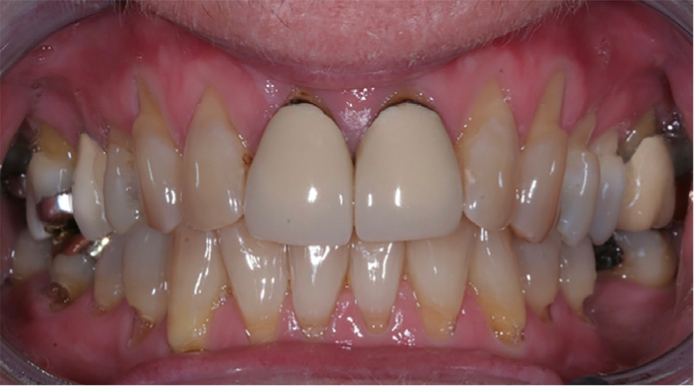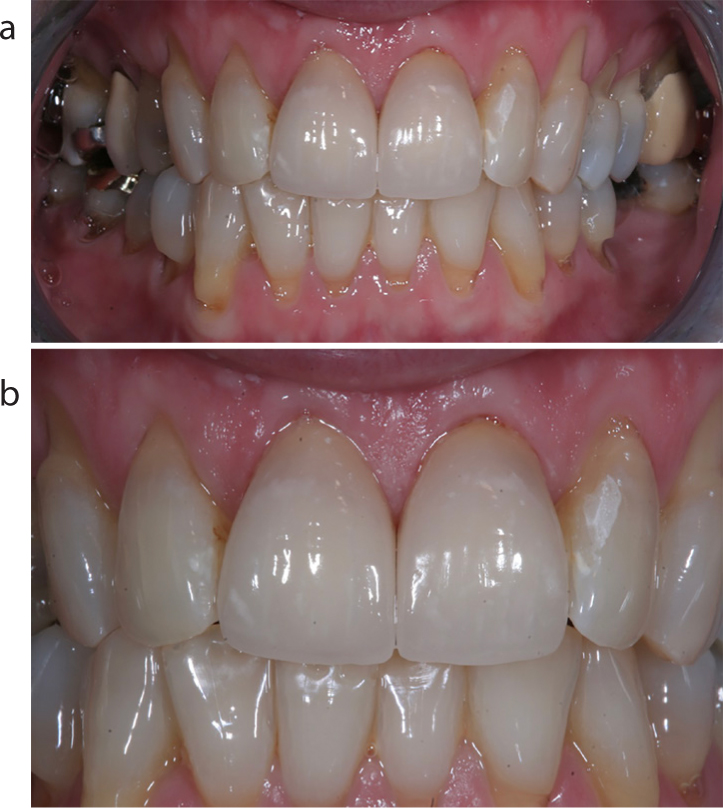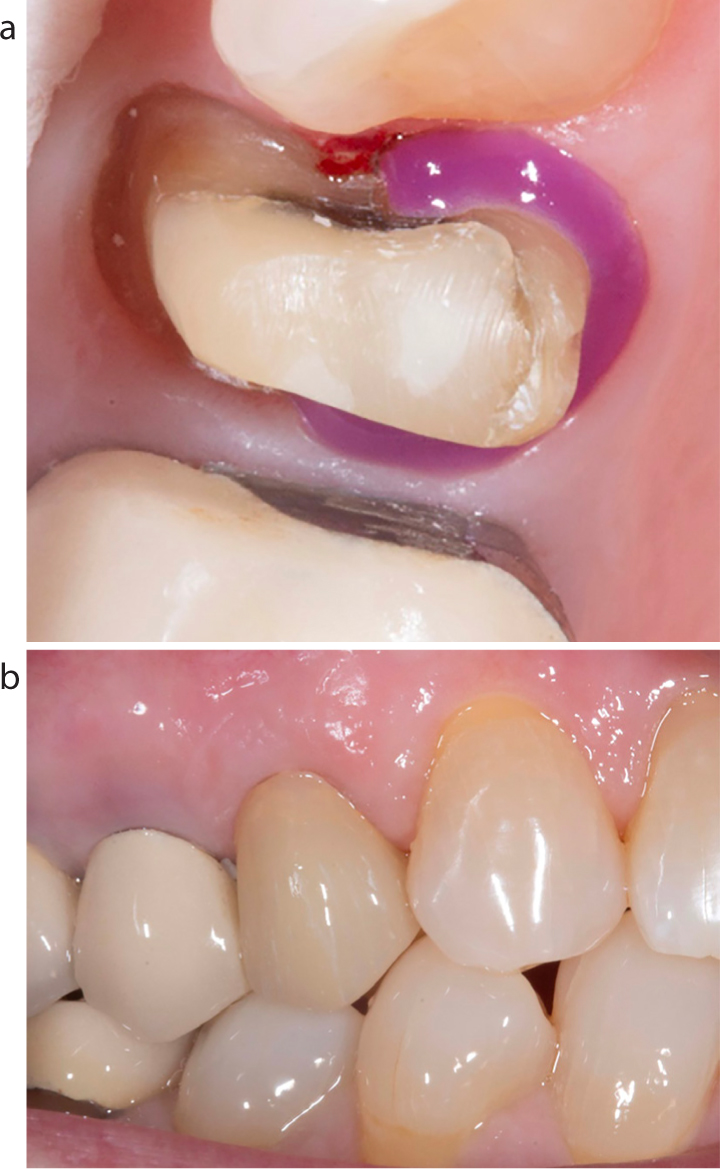| Becker et al17 Kiel, Germany |
Long-term clinical outcome of 45 inlay-retained FPDs (in 42 patients) made from lithium disilicate glass-ceramic (IPS e.max Press, Ivoclar Vivadent) were evaluated. These replaced eight premolars and 37 first molars. Clinical treatment was carried out by 15 clinicians with circa 2 years' experience supervised by two specialist prosthodontists. Inlay preparation procedures were performed in accordance with the general principles for ceramic inlay restorations. Observation time was 100 months (minimum 4, maximum 234) |
33 (73%) FPDs failed during the observation period and were replaced by other restorations, with the Kaplan–Meier survival rate being 57% at 5 years, 38% at 8 years, and 22% at 15 years |
The authors concluded that lithium disilicate inlay-retained FPDs had a high clinical failure rate and that the clinical outcome of experimental inlay-retained FPDs made from lithium-disilicate ceramic was not acceptable when compared to conventional crown-retained FPDs and cannot be recommended for regular clinical use |
| Garling et al18 Kiel, Germany |
A 15-year prospective study of 36 three-unit FPDs replacing anterior (16%) and posterior (84%) teeth in 28 patients was conducted |
Three FPDs were classified as dropped out, and, of the remaining 33 FPDs, observed for a mean time of 167 months, the success rate (ie restorations free from complications) was 30.9% after 15 years |
The authors noted a dramatic drop in monolithic lithium disilicate ceramic FPD survival and success rates. Purported to be a result of fatigue and crack propagation caused by clinical ageing and loading conditions. They noted that no fractures occurred within the first 6 years, but after 7 years ceramic fractures started and the fracture rate increased substantially after 10 years. They added that ‘compared to the still ‘gold standard’, metal–ceramic FPDs, our results with all-ceramic FPDs are considerably inferior after 10 years’ |
| Malament et al19 |
10-year performance of pressed lithium disilicate restorations (IPS e.max, Ivoclar Vivadent) placed in 556 patients (1960 complete coverage restorations) in a private clinic were examined. All restorations were constructed using the lost wax method and a glass-ceramic pressing system, and the fit surface of all was etched with 4.5% buffered HF and silane, coated with Monobond Plus (Ivoclar Vivadent). The crowns were bonded in place using a dentine bonding agent and resin cement |
Seven failures were recorded, with the average time to failure being 4.2 years, and these being confined to molar teeth. At 10.4 years, the mean annual failure rate was 0.2% |
The authors concluded that IPS e.max lithium disilicate crowns exhibited excellent survival, and tooth position or monolayered or bilayered structure had little effect on survival |
| Pieger et al20 |
Although not a recent publication (published in 2014), this systematic review is considered by the present authors to present useful insight into the performance of lithium disilicate when used for single crowns of FPDs. They identified 2033 studies, including 12 in their analysis |
The 5-year cumulative survival rate was calculated to be 97.8% for single crowns and 78.1% for FPDs, respectively |
The authors concluded that for lithium disilicate single crowns, excellent short-term survival rates are evident, while the evidence for medium-term survival of lithium disilicate FPDs is ‘not promising,’ adding that the majority of failures in both types of restoration were reported in the posterior region of the mouth and that caution is advised for the use of lithium disilicate for FPDs. This was confirmed by a critical review of this work by Coe in 201721 |
| Brandt et al22 Kassel, Germany |
Retrospectively evaluation of 1058 full-coverage crowns and FPDs over 66 months, placed in a private dental practice, all being constructed in IPS e.max (Ivoclar Vivadent) |
There was a 5-year cumulative survival of 94.7% for crowns and 90.6% for FPDs |
The authors added that significantly superior outcomes were obtained when adhesive cementation was used and for vital versus non-vital teeth |
| Teichmann et al23 |
Prospective evaluation of 10-year clinical outcome of tooth- and implant-supported crowns, and FPDs formed in a lithium disilicate glass-ceramic framework material |
184 restorations (106 single crowns, SCs; 32 implant crowns, ICs; and 33 FPDs) were placed in 73 patients. There were 14 patient drop-outs, and the final dataset included 87 SCs, 17 ICs and 27 FPDs. 10-year survival rate/chipping-free rate was 86.1%/83.4% for SCs, 93.8%/94.1% for ICs, and 51.9%/90.8% for FPDs |
The authors concluded that ‘the SCs had a lower outcome than expected, the ICs had a favourable outcome and the FPDs predominantly failed’ |






